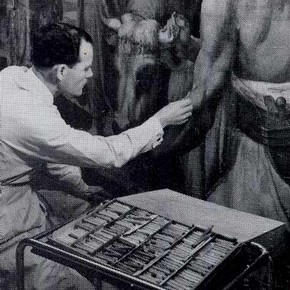Conservation Journal
October 1992 Issue 05
The Raphael cartoons for the Vatican tapestries: conservation treatments past & proposed
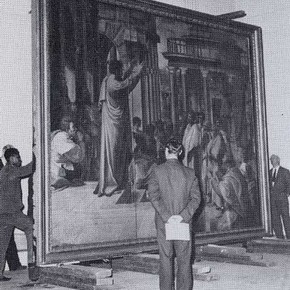
Fig 1. Removing a Cartoon from the wall in 1965 (the mastic joins between the three plates of glass can be seen) (click image for larger version)
The acceptance, in 1865, of seven designs for tapestries by Raphael was an important land-mark in the Museum's history. The Cartoons, large paintings on paper mounted on canvas, came to the then South Kensington Museum as a loan from Queen Victoria and have retained the status of royal loan to this day. Their great importance as irreplaceable examples of Renaissance art and Raphael's genius is unquestionable, but for the last 127 years the task of protecting and conserving the Cartoons (the smallest of which is 11' by 17') has been a formidable one. The current re-roofin and refurbishment of the Raphael Cartoon Court has once more raised questions about their condition and their future.
A brief history
In 1515 Raphael was commissioned by Pope Leo X to paint ten cartoons (three are lost). They were completed by 1516. In 1620 they were discovered by Rubens in a drawer in Arras and purchased by Sir Charles Crane for Prince Charles (later Charles I). After the execution of Charles they were purchased by Oliver Cromwell and later by William III. By the time they reached this Museum they had been displayed at Hampton Court Palace, Whitehall, Buckingham Palace, and actually folded in half for traveling loans to places like The British Institute. In 1858 a letter was sent to Henry Cole, the Museum's first director, proposing the loan. It was not until 1865 that the final decision was made to house them in the 'fireproof galleries' of the South Kensington Museum for greater public exposure.
History of treatments
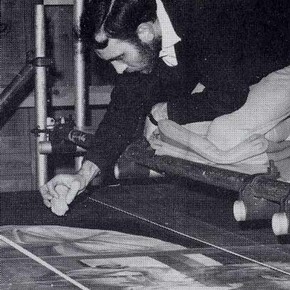
Fig 2. Jim Murrell removing the remains of pulverised vinyl eraser, used for the surface cleaning of the Cartoons (click image for larger version)
In 1865 there were suggestions to preserve the Cartoons between glass sheets sealed with gelatine to eliminate dust and pollution. There was also a suggestion of introducing zinc boxes containing quicklime to prevent moisture build-up behind each Cartoon and absorb 'mischievous vapours.'
Although there is some evidence of an attempt in 1874 to clean the paint surfaces, the next well-recorded examination of the cartoons was in 1891 when H M Stationery Office produced a report on Housing of the Raffaelle (sic) Cartoons, by Professor A H Church. His findings were that the secondary canvas support was in a strongly acid state; similarly the American cloth backing.
Pigment analysis by Dr Russell verified that Henry Cooke had used identical pigments to Raphael in his restorations. He concluded that, although some of the original colour had faded (particularly the crimson), the rate of fading generally had diminished.
Daily measurements of moisture content of both canvas and paper showed it to be constant at around 7%. The medium used was thought to be yolk of egg although later analysis showed it to be animal glue size.Suggestions were made to administer 'barium hydrate in spirits of wine' to neutralise acidity in the canvas and to destroy any micro-organisms present. Treatments with paraffin wax were recommended to reduce hygroscopic expansion of the canvas. There is no evidence that either treatment was carried out.
In 1893 white linen blinds were purchased to be drawn during 'daylight' hours. Photographs were also taken at this point, prior to returning the Cartoons to their respective frames.
During 1894 a request was received from 'The paintings and Drawing Preservation Syndicate Limited' that the Cartoons be placed in their hands for sealing into a vacuum system for 'indefinite preservation'. The request was denied. The same group successfully encapsulated the Museum's painting of Venice by Turner.
The use of fire-proof blinds on rollers was suggested in 1912 and a plan to protect the backs of the frames with asbestos blankets was costed at £156 per frame.
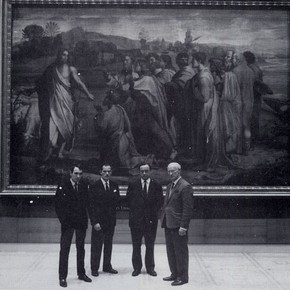
Fig 4. The completion of the conservation and the rehanging of the Cartoons in 1966 (L-R: Jim Murrell, Harry Rogers, Norman Brommelle and H A D Clark) (click image for larger version)
-
Inspection of Cartoons for dust penetration
-
Cleaning and re-gilding of the frames
-
Leaving a gap behind each Cartoon to avoid water leakage from above
-
Replacing the three-sheet system for single sheets of glass in each frame
-
Provision for easy removal in the event of fire
In February 1915 Sir Charles Church recommended that the Cartoons be sloped forward to avoid dust adherence to the surfaces, and that the rotting edges of canvas be bound. Also the Cartoons were housed in wooden boxes with hanging mattresses of silicate slagwool to protect them from possible bomb damage.
Very little is recorded during the next nine years until April 1924 when cleaning was carried out by G S Rowlands, (foreman), H Wilson and W Cave. In April 1929 the Cartoons were once again removed, primarily to re-seal the gaps between the glazing material by coating the fish glue already present with a layer of India rubber onto both sides. Some conservation work was also achieved at this time in the form of re-attaching loose areas of paper support.
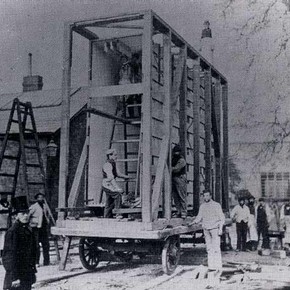
Fig 5. Object handlers of the 1860s under the direction of Captain Fowkes (click image for larger version)
In November 1933 the cartoons of Elyntas and Death of Ananias were found to have areas of damage around their edges, and strip lining was mentioned as a remedy. On the recommendation of the Director, Eric Maclagan, Picelin (a black wax-like substance) and 'Bateman's Cement' were tried as adhesives, but previous experience had shown that any wax preparations could easily penetrate the structure and stain the paper layers.
During 1934-35 strip lining of all the Cartoons - except for Sacrifice at Lystra - using glue and paste (rice starch) with formalin, was carried out by Horace Clark and Basil Long of the 'Art Workroom' (forerunner of the Conservation Department). It was during this operation that a double layer of paper was discovered lying between the old and new canvas backings.
During the strip lining process, some surface cleaning with soft chamois was attempted, plus several different treatments - all recorded. Nothing further was carried out until the advent of the Second World War, when a brick-built shelter was constructed to protect the Cartoons.
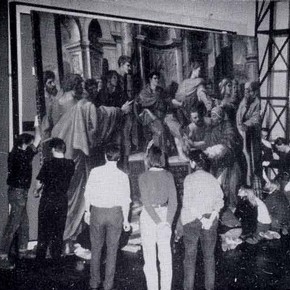
Fig 6. 'Paul Preaching at Athens' is placed into its travelling frame, 1992 (click image for larger version)
Many of the long-standing problems were resolved, such as better control of penetration by pollution using carbon filters and control of daylight with automatic blinds. The old greenish plate glass was replaced with single sheets of water white polished plate.
Improvements to the Cartoons themselves were achieved by careful surface cleaning and repair of tears, and laying of loose or flaking paper and paint. Many of the old repaints and in-fillings, which did not match the surrounding original, were removed and those which could not be safely removed were disguised. Retouching of losses was done in pastel, considered to be reversible. The selected range of permanent pastel colours was specially prepared by George Rowney and Company Limited, as compressed sticks of dry pigment with little binding media.
At this time Norman Brommelle enlisted the aid of the National Gallery's Scientific Department to examine the Cartoons before and during treatment. This allowed them to take a limited number of samples for microscopic examination and chemical analysis from edges of existing damages and losses. The results of these tests were finally published in 1990 by Princeton University Press.
Conclusion
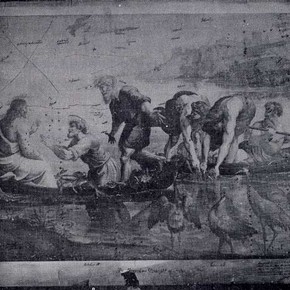
Fig 7. Print taken from a glass plate negative with remarks on condition by Richard Redgrave (click image for larger version)
The non-destructive methods available to us are X-ray, infra-red and ultra-violet which, combined with raking and transmitted light photography, will enable us to chart and map their present state. Magnification of the surface with a fibre-optic video microscope, and carbon-dating of existing samples of original canvas, should give positive guidance to immediate treatments or a possible basis for future conservation programmes.
The estimated time of six to eight weeks per painting should enable us to complete the programme within a year and, hopefully, produce the results in a further article soon afterwards.
Further reading
Reynolds, G, 'The Raphael Cartoons', London, 1974
Pope-Hennessy, J, 'The Raphael Cartoons', London, 1950 (rep 1958)
White, J, 'Raphael's Cartoons in the Collections of Her Majesty the Queen', London,1972
Shearman, J, 'Raphael's Cartoons in the Collections of Her Majesty the Queen', London, 1972
October 1992 Issue 05
- Editorial
- Working with students on collection condition surveys at Blythe House
- The AMECP project: prevention is better than cure
- Conservation & rotating displays in the Nehru Gallery of Indian art
- The Raphael cartoons for the Vatican tapestries: conservation treatments past & proposed
- Exchange visit to the National Palace Museum, Taipei, Taiwan
- A review of the interim symposium of the ICOM leather & related materials group
- Closed for summer or shuttered for good? The RCA/V&A conservation course study trip 1992
